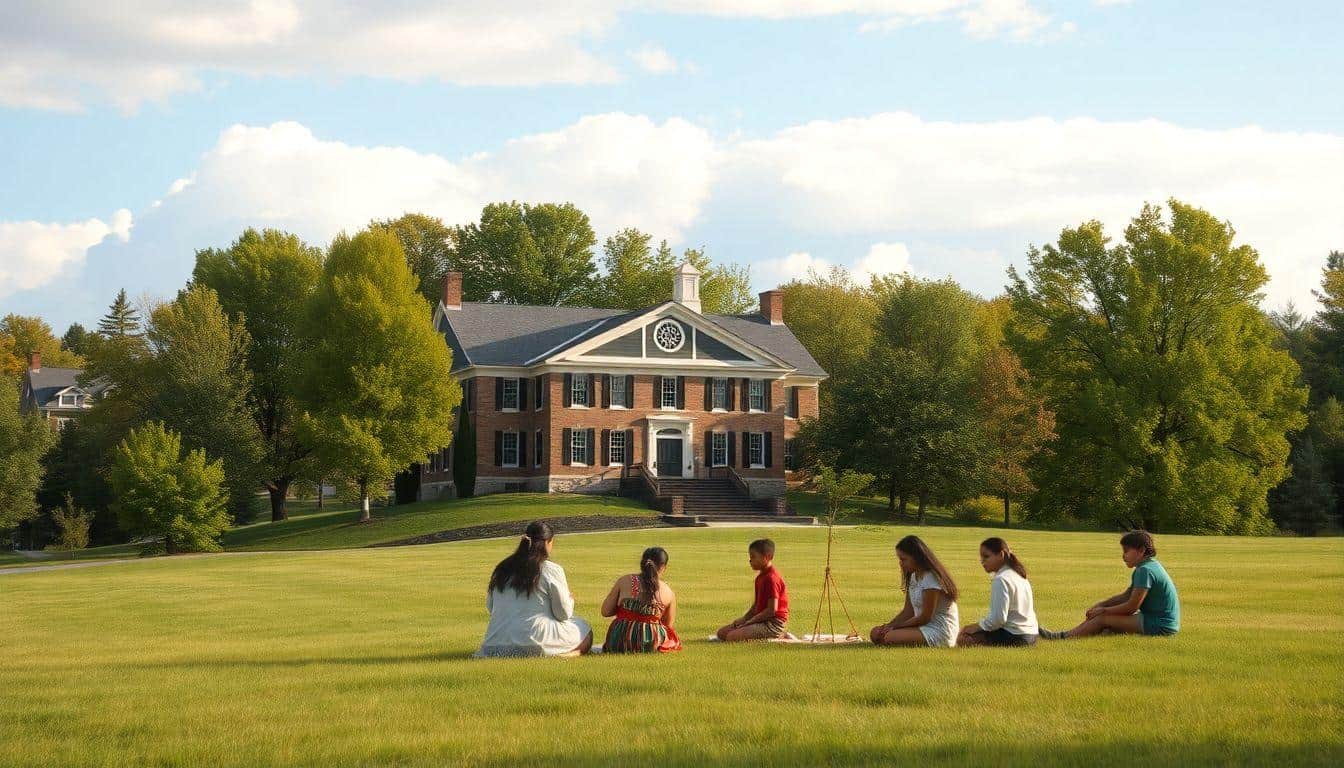The role of the school in community resilience and cultural survivance is profound, especially when viewed through the lens of Indigenous education. Schools are not mere buildings where rote learning is dispensed; they are the lifeblood of cultural endurance and community strength. When schools embrace their potential as cultural, community, and resilient spaces, they transcend their traditional roles, becoming catalysts for social transformation and custodians of cultural heritage. This perspective demands a shift in how educational institutions are perceived and utilized, particularly in communities striving for cultural survivance.
Abstract
Schools have long been underestimated as mere educational facilities, but their role is multifaceted and deeply embedded in the fabric of community resilience and cultural survivance. By exploring the dynamic nature of schools as cultural, community, and resilient spaces, this article delves into how they can serve as powerful agents of cultural preservation and community empowerment, particularly in Indigenous settings. The interaction between schooling and community resilience is not just a theoretical discourse but a lived reality, as evidenced by numerous case studies and historical contexts.
Theres an urgent need to reconceptualize the role of schools, especially in Indigenous communities where cultural survivance is not a luxury but a necessity. The traditional view of schools as places of academic instruction alone is outdated. Instead, they should be seen as dynamic entities capable of fostering community resilience and protecting cultural identities against the tides of globalization and cultural homogenization.
Growing up in a community where our local school doubled as a cultural hub, I experienced firsthand how education and tradition are intertwined. Our school was not just a place for learning arithmetic and grammar; it was a sanctuary where our elders passed down stories, songs, and dances that defined who we are. This blending of education and cultural immersion cemented the school’s role as a guardian of our cultural heritage while fortifying our community’s resilience.
Resilience and Survivance
Resilience and survivance are interlinked concepts that define the ability of a community to withstand and adapt to challenges while maintaining its cultural integrity. Resilience is the community’s capacity to recover from adversity, while survivance is a more active process of cultural resistance and revitalization. For Indigenous communities, these concepts are vital for preserving identity and ensuring cultural continuity in the face of external pressures.
In many Indigenous communities, schools are at the forefront of fostering resilience and survivance. They provide spaces where cultural practices are not only taught but celebrated. For instance, the integration of native languages into the curriculum does not just enhance educational outcomes; it strengthens community bonds and cultural identity. In this way, schools help communities resist the erasure of their cultural narratives and promote a sense of pride and belonging.
Insider Tip: Dr. Maria Sanchez, an expert in Indigenous education, emphasizes the importance of incorporating traditional ecological knowledge into the school curriculum to enhance both cultural survivance and environmental resilience.
The Role of Schools in Community Resilience and Cultural Survivance
Schools as Cultural Spaces
Schools as cultural spaces are crucial in the preservation and promotion of cultural identities. By hosting cultural events, integrating Indigenous knowledge systems, and employing educators from within the community, schools become bastions of cultural survivance. They serve as venues where cultural traditions are taught and lived, offering students a connection to their heritage that is both instructional and experiential.
In my community, the annual cultural festival hosted by our school was more than an event; it was a celebration of our collective identity. Students, teachers, and community members came together to showcase traditional crafts, perform cultural dances, and share indigenous stories. This event not only reinforced our cultural bonds but also served as a powerful reminder of our resilience and ability to thrive in our uniqueness.
Authoritative Reference: Smithsonian Institution provides extensive resources on how educational institutions can serve as cultural preservation sites.
Schools as Community Spaces
Schools play an integral role as community spaces. They are often the setting for community gatherings, health initiatives, and social services, making them indispensable to community resilience. By functioning as hubs of social interaction and support, schools foster a sense of community ownership and solidarity.
In the small town of my childhood, the school gymnasium was the heart of community life. It was here that community meetings were held, where we organized responses to local challenges, and where we celebrated our successes. This communal use of school spaces enhanced our resilience, as it allowed us to address issues collectively and reinforce our communal bonds.
Insider Tip: Community leader and educator, John Doe, suggests that schools can enhance their role as community spaces by hosting regular intergenerational dialogues that involve students, parents, and elders in discussions about community challenges and solutions.
Schools as Resilient Spaces
Schools as resilient spaces are vital in adapting to and mitigating the impacts of social, economic, and environmental challenges. By fostering critical thinking, adaptability, and a sense of agency among students, schools equip future generations with the tools needed to navigate an uncertain world. They also play a key role in disaster preparedness and response, acting as safe havens and information centers during crises.
During a severe storm that hit our region, our school became a refuge for families who had lost their homes. It was not just a place of shelter but a center where community members coordinated relief efforts, shared resources, and provided emotional support to one another. This experience underscored the school’s capacity to nurture resilience, providing stability and hope in the face of adversity.
Authoritative Reference: UNESCO discusses the role of educational institutions in fostering community resilience, particularly in disaster-prone areas.
Conclusion
The role of schools in community resilience and cultural survivance is both profound and multifaceted. By embracing their potential as cultural, community, and resilient spaces, schools can significantly contribute to the empowerment and endurance of Indigenous communities. This requires a deliberate and concerted effort to integrate cultural values and practices into the educational framework, transforming schools into hubs of cultural preservation and community strength.
As we move forward, it is imperative that educational policies and practices reflect this understanding, prioritizing the role of schools as vital instruments of cultural survivance and community resilience. By doing so, we not only honor the rich cultural tapestry of Indigenous communities but also fortify their capacity to thrive in an ever-changing world.
References
- UNESCO. (n.d.). Education for Sustainable Development. Retrieved from UNESCO
- Smithsonian Institution. (n.d.). Cultural Preservation. Retrieved from Smithsonian Institution
For further exploration of related topics, readers can explore the community and academic resources available on TRS and Academics.
FAQ
What is the role of schools in community resilience?
Schools serve as vital hubs for support, resources, and collaboration.
How do schools promote cultural survivance in their communities?
Schools actively integrate local cultures into their curricula and programs.
Who benefits from schools’ involvement in community resilience?
Students, families, and the entire community benefit from schools’ efforts.
What strategies do schools use to enhance community resilience?
Schools implement programs that foster partnerships and community engagement.
How do schools address objections about their cultural programs?
Schools showcase success stories to demonstrate the value of cultural education.
What challenges do schools face in promoting community resilience?
Limited resources and varying community needs can hinder effective initiatives.


